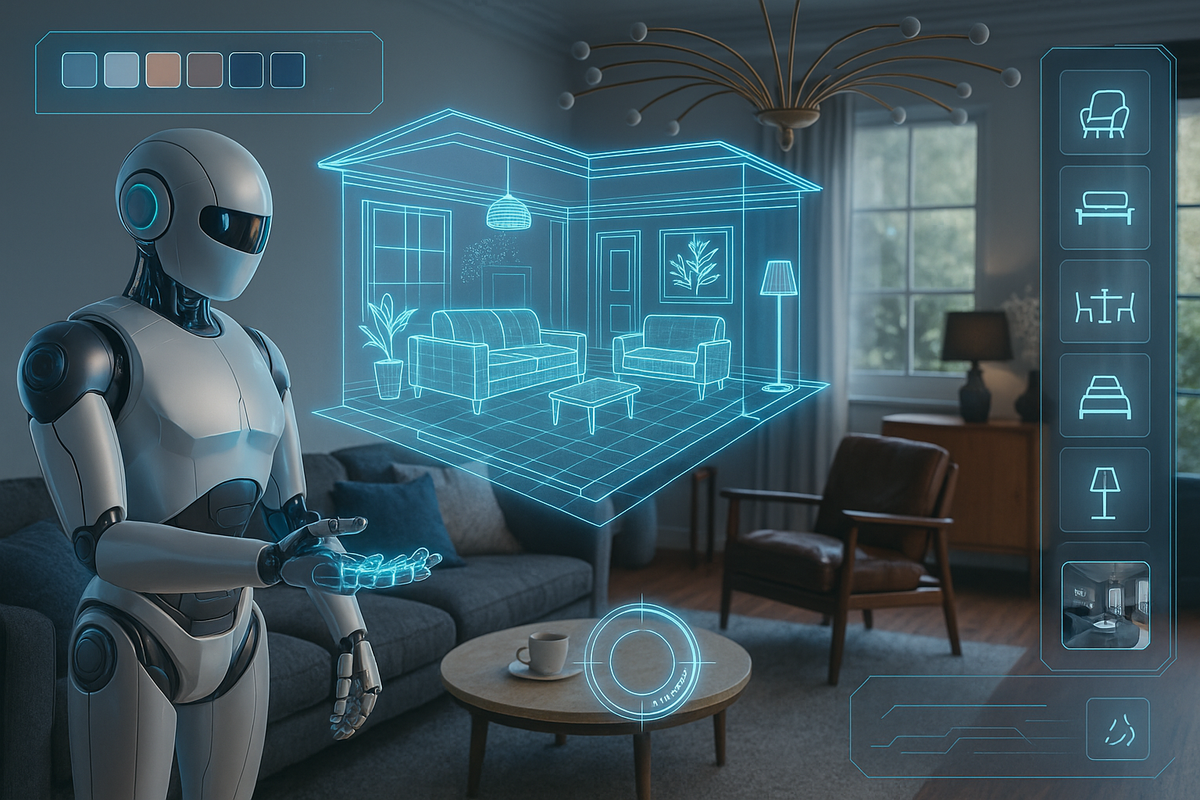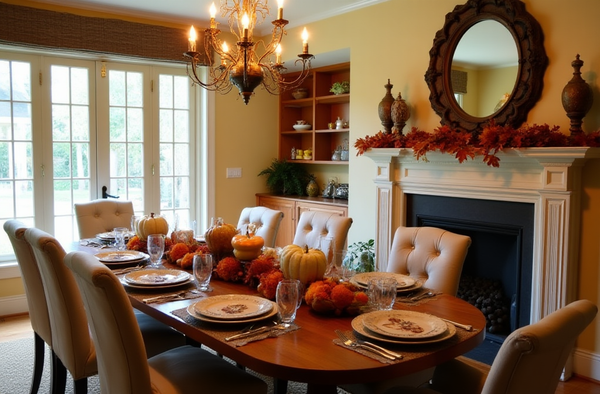How AI Transformed My Home Design Experience from Start to Finish

Designing a home has traditionally been an overwhelming, time-consuming, and often costly process. From planning the layout to choosing the right furnishings, the journey from blueprints to a fully furnished home can feel like an endless list of decisions. But thanks to the power of Artificial Intelligence (AI), my recent home design experience was dramatically streamlined and enhanced. What once felt like a daunting uphill climb became a seamless, incredibly personalized, and even enjoyable project.
🤖 The Beginning: Discovering AI Tools for Home Design
My journey started like many others — with countless Pinterest boards, swatches, and magazine clippings. But everything changed when I discovered AI-assisted design platforms. These tools weren't just for architects or tech-savvy individuals; they were intuitive, affordable, and ready to use.
Here are the key ways AI kickstarted my home design project:
- Smart Room Planning: AI-based apps allowed me to upload photos of my space or input dimensions and provided instant layout suggestions optimized for space and function.
- Style Matching Algorithms: Platforms like Modsy and Houzz used machine learning to understand my preferences from uploaded photos, offering matching furniture and décor options.
- Budget Optimization: AI-powered calculators helped me break down the cost of design elements and make informed decisions based on available funds.
Most impressively, AI platforms learned from the decisions I made. As I browsed, liked, and purchased items, the recommendations only improved, matching both my aesthetic and practical needs almost perfectly.
💭 Visualization Made Real: Try Before You Buy
One of the most game-changing features of AI in the design process was the augmented reality (AR) and virtual staging tools. These allowed me to see how furniture and color schemes would look in my home before making any purchases. No more guessing or relying solely on imagination!
Benefits of AI-powered visualization:
- Eliminated buyer’s remorse: I could see exactly how a new couch or light fixture would appear in my space before adding it to my cart.
- Faster decision-making: Real-time room simulations saved me from multiple store visits and back-and-forth deliberation.
- Accurate dimension testing: AI tools ensured everything would fit perfectly, factoring in spacing, movement areas, and lighting flow.
High-resolution 3D rendering tools even allowed me to "walk through" my newly designed home months before actual furnishing. It was like having a digital twin of my property under my control — and it was both thrilling and incredibly helpful.
🛋️ Furniture and Decor: Smart Shopping with AI Integration
After finalizing the layout, it was time to shop. Now, this is where AI truly took the wheel. Gone were the days of endless scrolling through unrelated items. With AI-style filters and intelligent product recommendations, shopping became curated and efficient.
How AI enhanced my furniture shopping experience:
- Personalized product curation: AI engines studied what I liked and produced a dynamic list of complementary pieces within my style and budget.
- Retail integration: Some platforms synced directly with online stores, allowing for one-click buying directly from the design interface.
- Price comparison bots: AI bots automatically compared prices across marketplaces, ensuring I got the best deal every time.
Not only did this significantly cut down shopping time, but it also helped me avoid impulse buys that clashed with the overall vibe of my home. The AI made sure everything matched — in style, scale, and function.
💡Lighting, Color, and Climate Considerations: AI Delivers Data-Backed Design
I never imagined elements like natural lighting patterns, color temperature analysis, or climate compatibility would be factors I could easily assess during home design. Yet AI brought these otherwise complex elements into the fold.
AI tools included:
- Sunlight path simulators: These helped me choose window placements and curtain types by showing how sunlight would travel through my home throughout the day and year.
- Paint and palette analyzers: AI apps analyzed the color impact on mood and lighting, providing contrast suggestions and brightness-enhancing combos.
- Eco-friendly material recommendations: Based on climate, AI systems recommended sustainable materials for insulation, flooring, and roofing that matched local weather conditions.
This data-driven design approach made my home more energy-efficient and comfortable while also helping me make environmentally friendly decisions. It’s a part of home design that’s too often overlooked — but no longer, thanks to AI.
⏳ Real-Time Collaboration & Feedback
Another standout feature? Real-time collaboration with designers and contractors through AI-enhanced platforms. As I refined my vision, I shared my virtual room views, selected items, and diagrams with professionals who could offer instant feedback or pivot based on live rendering changes.
Even family members could explore the design in a virtual walkthrough and add comments, making the process accessible and inclusive. AI also flagged potential issues — things like traffic flow disruptions or color clashes — before they became real-world inconveniences.
The Collaborative Tools I Used:
- Co-editing design files in real-time across different devices
- Automatic syncing with project timelines and contractor workflows
- Voice-assisted planning with Alexa and Google Assistant compatibility
🙆🏻♂️ Automation = Less Stress
Perhaps the biggest surprise was how much AI reduced the stress factor in such a complex undertaking. Deadlines didn’t seem impossible, communication was clear, and decision-making became data-driven and less emotional.
Here’s how automation simplified my life:
- Scheduling tools kept deliveries and construction on track
- To-do lists auto-generated based on my project stage
- Virtual assistants managed vendor follow-ups and timelines
- Smart home integrations were recommended and installed seamlessly
By the project’s end, I realized I’d gained more than a beautifully designed space. I gained decision confidence, valuable time, and peace of mind.
🏠 The Future Is Here: AI in Home Design Is No Longer Optional
Looking back, AI didn’t just enhance my home design experience—it completely redefined it. From concept to completion, every element of my journey was personalized, automated, and elevated through the power of artificial intelligence.
Whether you're remodeling, building, or just refreshing your space, adopting even a few AI tools can make the process:
- More efficient
- Less expensive
- Less stressful
- Far more satisfying
Designing a home doesn't have to be a struggle. With intelligent software by your side, the process transforms into a creative, efficient, and even joyful venture. Thanks to AI, your dream home is no longer aspirational — it’s achievable, and just a click away.
Ready to Get Started?
If you're ready to embrace AI in your home design journey, start by exploring popular tools such as Planner 5D, Spacely AI, Houzz Pro, and RoomGPT. These platforms offer free trials and intuitive apps that make it easy to test the waters before you dive in.
AI isn't just the future of home design — it's the present. And it's a game-changer.




